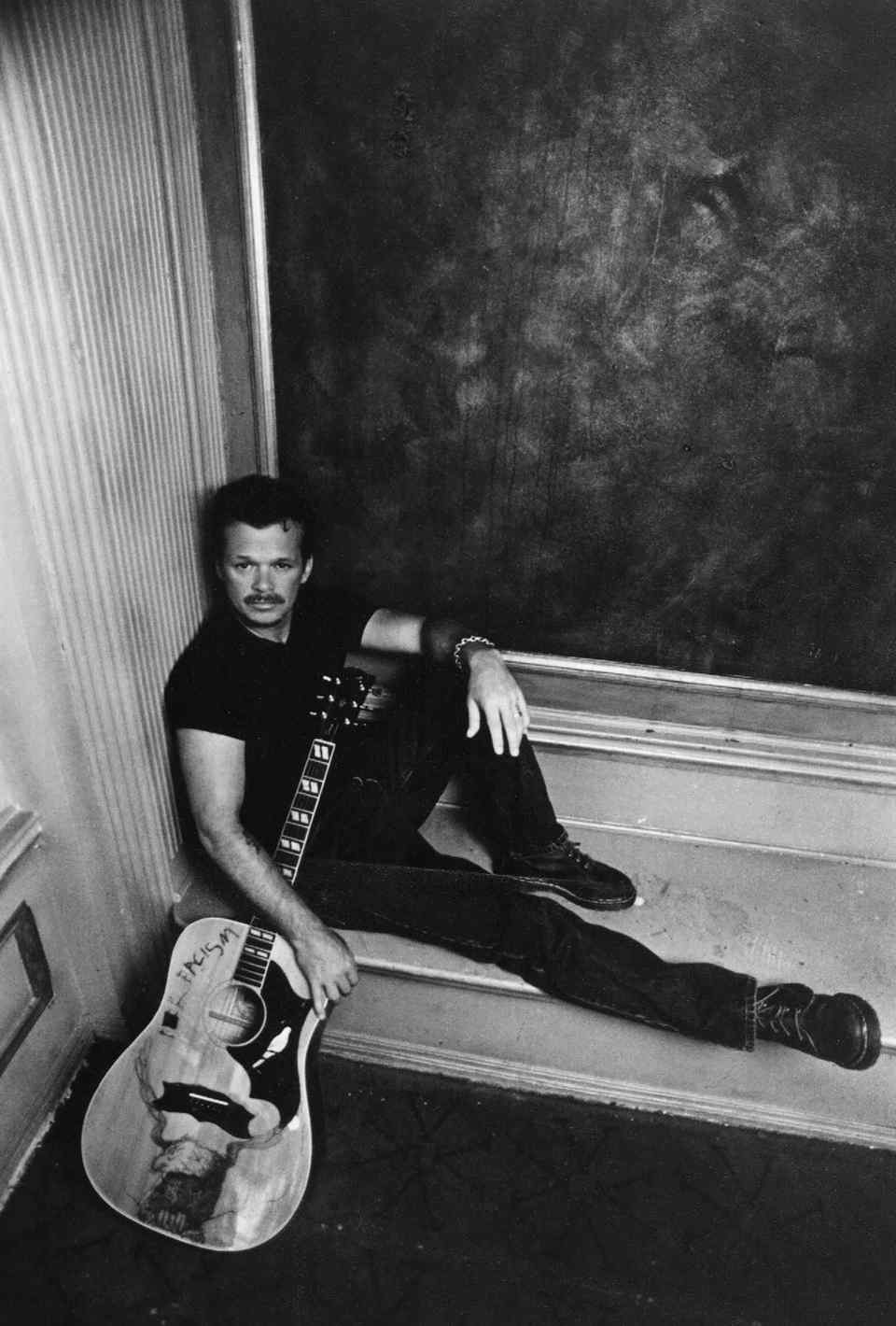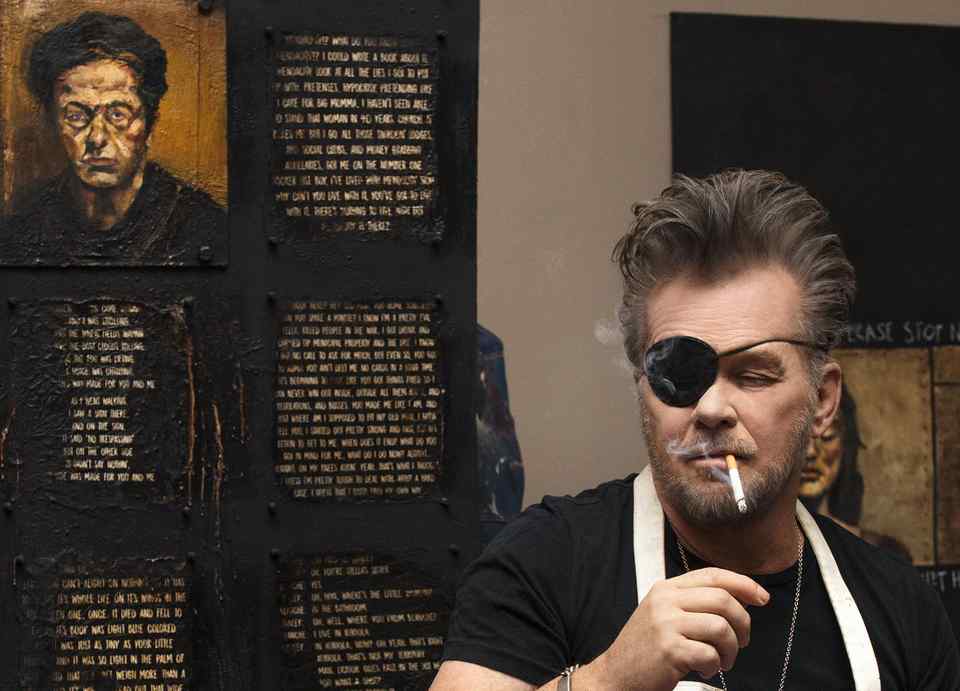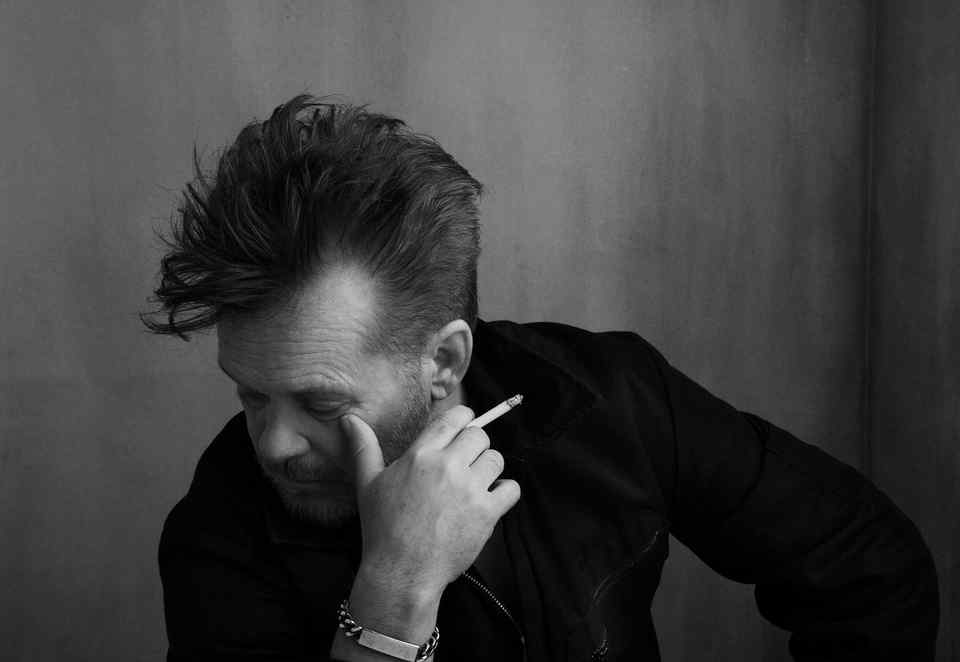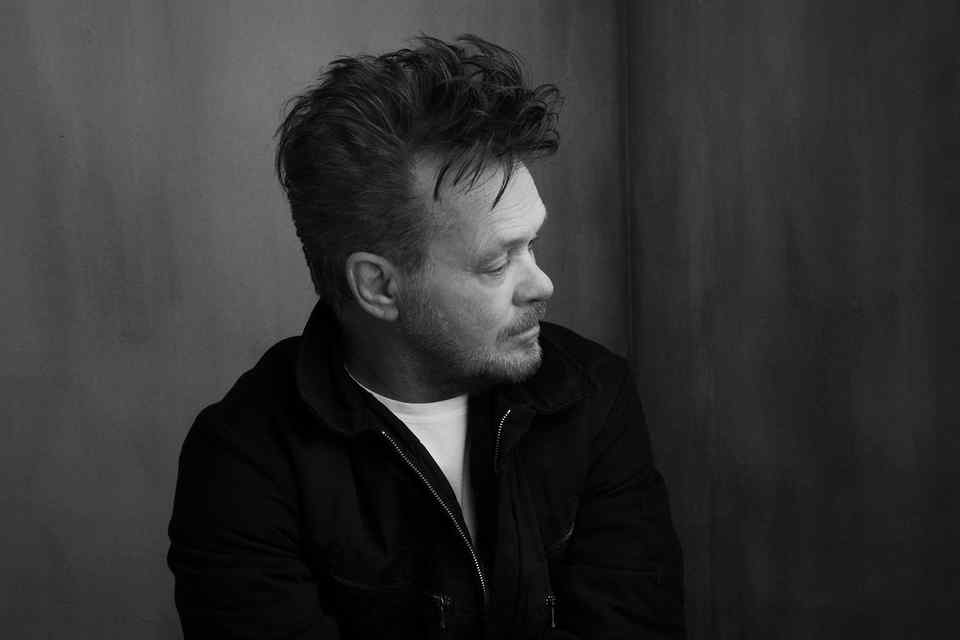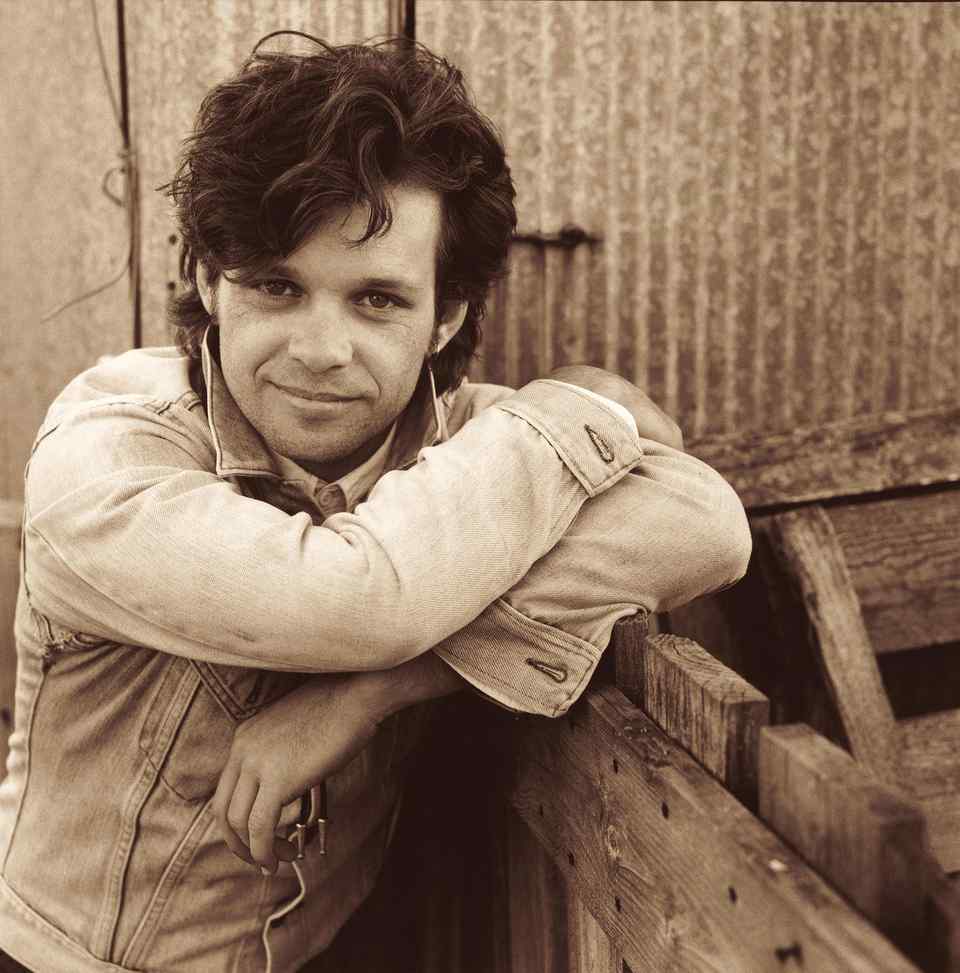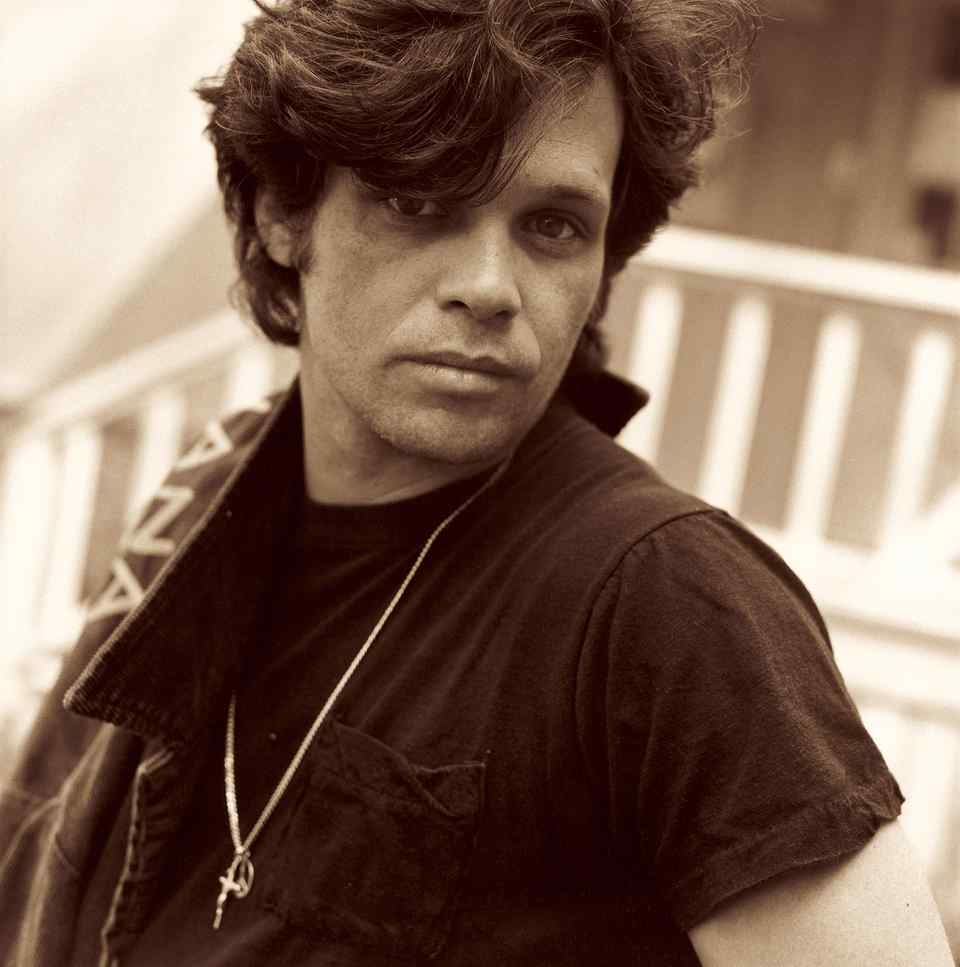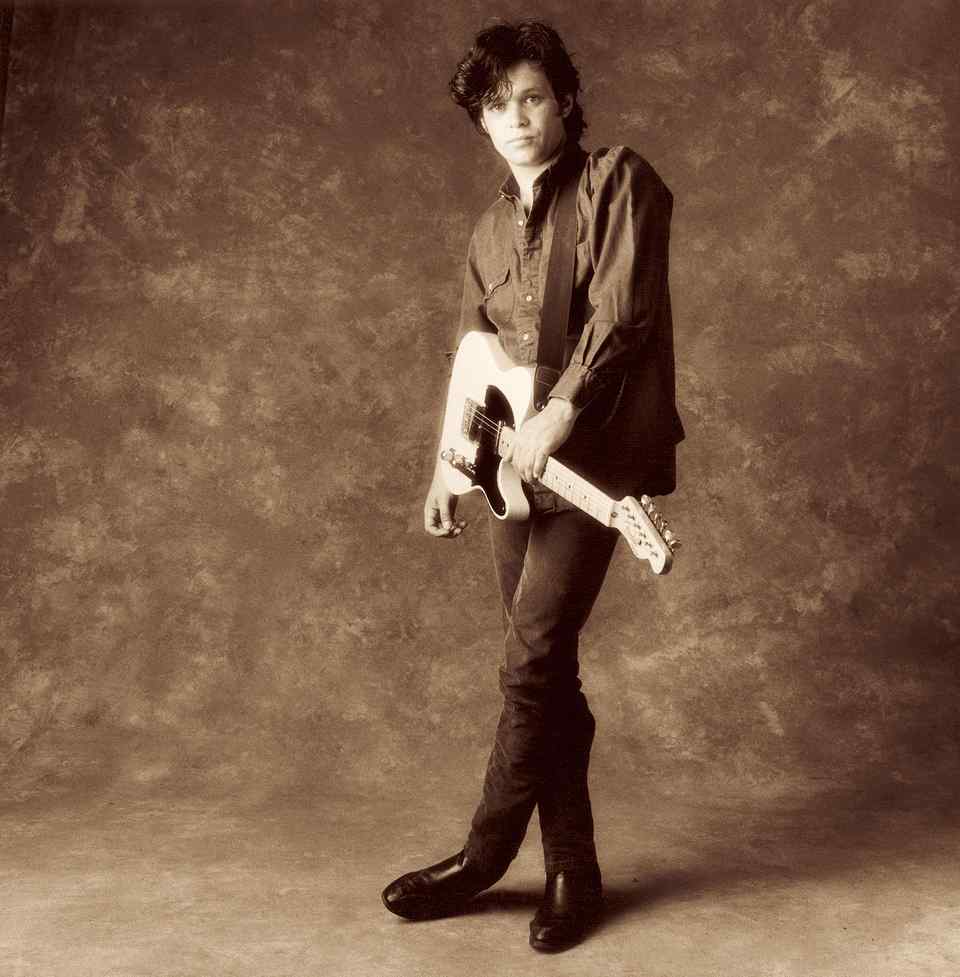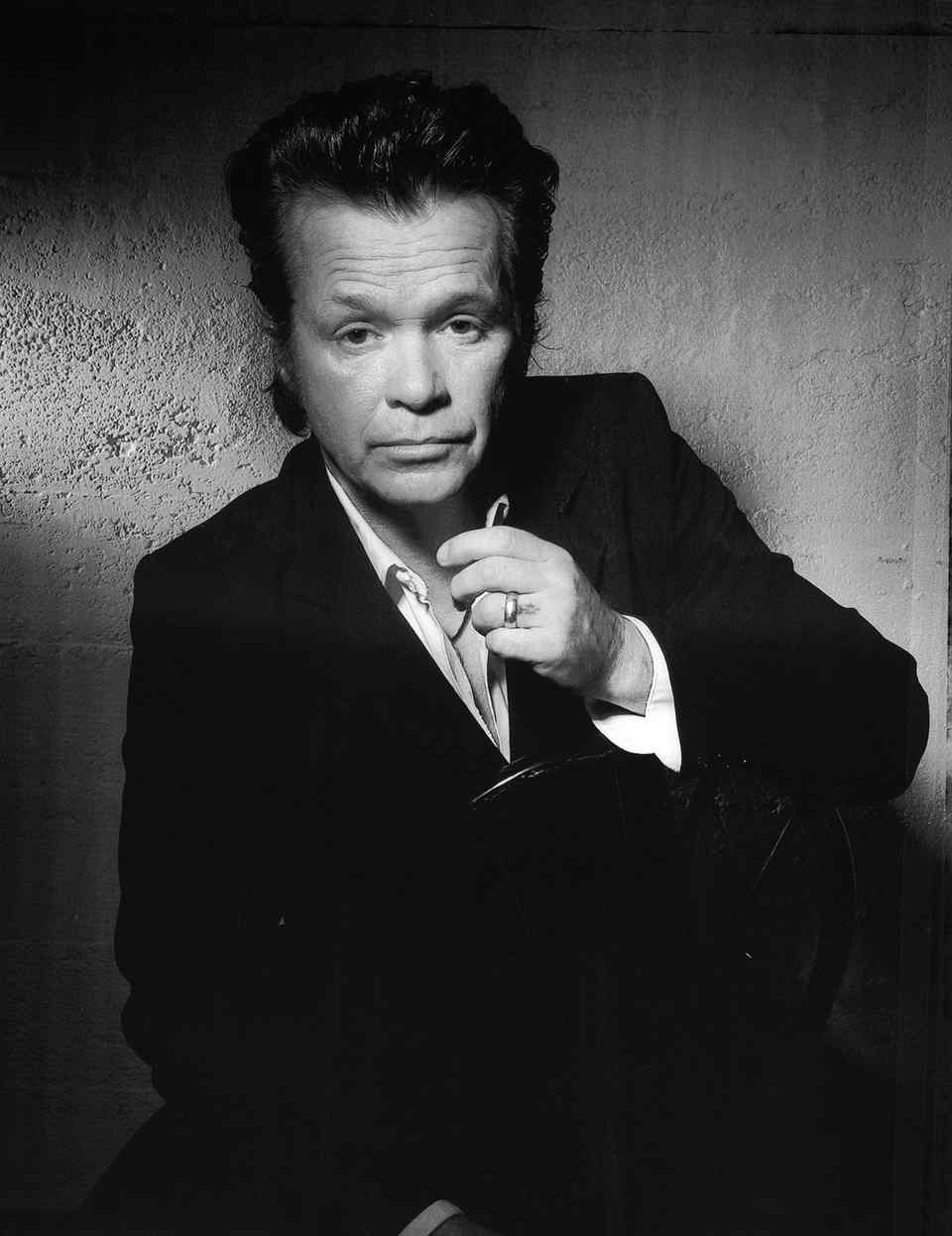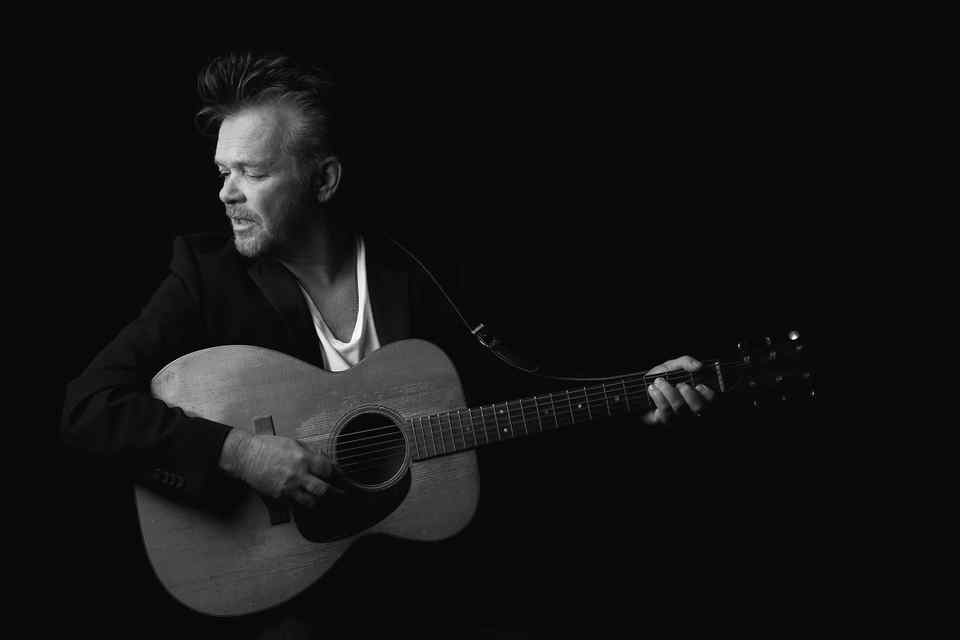Bloom Magazine: Ghost Brothers Of Darkland County’ Confuses And Delights In Bloomington Premiere
Ghost Brothers of Darkland County’ Confuses and Delights in Bloomington
Premiere
BY MIKE LEONARD - Bloom Magazine
The mystery of what really happened on that fateful 1967 night in Lake Belle Reve, Mississippi, remained an open question for many in the full-house audience for the touring premiere of Ghost Brothers of Darkland County at the Indiana University Auditorium Thursday night.
Was the ending metaphorical? Literal? Borrowed from Quentin Tarantino’s Reservoir Dogs?
People were audibly analyzing the climax of the “play with music” as they filed out of the 3,000-seat auditorium and made their way through the cool autumn night down East 7th Street. And in many ways, that’s a good thing: what playwright wouldn’t want an audience thinking and discussing a play after a performance, as opposed to labeling it as predictable or trite?
The work began with a tale heard by Bloomington-based singer and songwriter John Mellencamp, who told it to best-selling author and master of the macabre, Stephen King. King massaged the tale into the libretto to Ghost Brothers, Mellencamp wrote the music and lyrics, and celebrated musical producer T Bone Burnett melded the story and song.
This much was clear. From the beginning of the premiere performance, it took a while for theater patrons to grasp the conceit and storyline. The folksy narrator, The Zydeco Cowboy, could have gotten off his ass at the beginning of the production, laid out the plot for clarity’s sake and it wouldn’t have destroyed any of the dramatic tension. The amicable Cajun cowboy and devilish, Puck-like character, The Shape, moved the story along in bits and pieces anyway during the course of two lengthy acts separated by an intermission.
The plot isn’t as difficult to grasp as it is to present visually. It centers on character Joe McCandless, a middle-aged man, who has come to realize that his sons, Drake and Frank, have become antagonistic, feuding siblings who remind him all-too-clearly of Andy and Jack McCandless, the older brothers he grew up with and were said to have died in an accidental murder and subsequent suicide.
Making matters worse is the fact that Drake and Frank are embroiled in a bitter fight over the affections of a pretty-and-she-knows-it woman, just as his brothers, Andy and Jack, were. The eerie and ugly similarities have prompted Joe to assemble the entire family at the old family cabin where the 1967 incident occurred and where he intends to tell them the truth about the old family story they’d only heard partially described in the past.
Joe hopes to keep his sons from meeting a similar fate. Making the Ghost Brothers production more confusing, and more engrossing, is the scenario that puts the ghosts of the dead family members with living ones in the same space, literally, in the cabin and on stage. It takes a while to figure out who’s who and what’s what, but when it starts clicking, the dramatic dialogue among the ghosts, intertwined with the actions of present-day, living characters, proves to be dynamic and emotionally charged.
As Mellencamp has explained, the production of Ghost Brothers evolved from a more traditional musical production into a modern version of a radio theater set, with all of the actors on stage, all of the time, sitting in chairs along the perimeter and moving to center stage when their characters are needed.
While it took the audience some time to catch on to the unusual staging, once it did, the laughs and applause grew louder and more frequent. And there were, indeed, laughs aplenty, despite the dramatic nature of the play. The Zydeco Cowboy’s frequent narration was wry and knowing, while his counterpart, The Shape, provided biting, cynical, and sometimes hilariously profane observations.
Two components of the production stand out. Mellencamp’s songs are surprisingly good and fitting for the production, rarely sounding like the music the Rock and Roll Hall of Fame member is known for, and more theatrical in approach than one might expect. Mellencamp’s core band members—Andy York, Jon E. Gee, Dane Clark and Troye Kinnett—perform admirably as the house band, performing in the shadows at the rear of the stage setup.
The cast for Ghost Brothers was outstanding, with all of the characters singing exceptionally well and acting out their roles as passionately as possible within the construct of the production. Bruce Greenwood portrays a strong but anguished Joe McCandless and Emily Skinner skillfully navigates her role as Joe’s alcoholic wife, Monique, who moves from wisecracking and tipsy to a good-sense family matriarch when the family needs her most.
Kylie Brown and Kate Ferber are equally dynamic in their parallel roles as the femme fatales from the two eras, Anna Wicklow and Jenna Farrell, respectively. And Eric Moore and his soulful baritone voice dazzle throughout as character Dan Coker, the caretaker and conscience of previous generation of the McCandless family. Jesse Lenat carries his Zydeco Cowboy character well but cedes some of the play’s best lines to Jake LaBotz, the devil-may-care observer, The Shape.
Prior to Thursday’s performance, Mellencamp accurately described Ghost Brothers as “not ready” and “a work in progress” and he was mostly right. The opening 20 minutes still needs to provide better clarity and the ambiguity of the ending is not entirely satisfying.
Still, the audience at the IU Auditorium rose to its feet at the close of Ghost Brothers of Darkland County on opening night and sustained an ovation until the cast returned for a deserved encore. And while “leave ‘em satisfied but wanting more” is more the goal of a musical performance than a play, the strengths of the production more than overcame its shortcomings. It’s well worth seeing now, and still could be tweaked into an award-winning production.
BY MIKE LEONARD - Bloom Magazine
The mystery of what really happened on that fateful 1967 night in Lake Belle Reve, Mississippi, remained an open question for many in the full-house audience for the touring premiere of Ghost Brothers of Darkland County at the Indiana University Auditorium Thursday night.
Was the ending metaphorical? Literal? Borrowed from Quentin Tarantino’s Reservoir Dogs?
People were audibly analyzing the climax of the “play with music” as they filed out of the 3,000-seat auditorium and made their way through the cool autumn night down East 7th Street. And in many ways, that’s a good thing: what playwright wouldn’t want an audience thinking and discussing a play after a performance, as opposed to labeling it as predictable or trite?
The work began with a tale heard by Bloomington-based singer and songwriter John Mellencamp, who told it to best-selling author and master of the macabre, Stephen King. King massaged the tale into the libretto to Ghost Brothers, Mellencamp wrote the music and lyrics, and celebrated musical producer T Bone Burnett melded the story and song.
This much was clear. From the beginning of the premiere performance, it took a while for theater patrons to grasp the conceit and storyline. The folksy narrator, The Zydeco Cowboy, could have gotten off his ass at the beginning of the production, laid out the plot for clarity’s sake and it wouldn’t have destroyed any of the dramatic tension. The amicable Cajun cowboy and devilish, Puck-like character, The Shape, moved the story along in bits and pieces anyway during the course of two lengthy acts separated by an intermission.
The plot isn’t as difficult to grasp as it is to present visually. It centers on character Joe McCandless, a middle-aged man, who has come to realize that his sons, Drake and Frank, have become antagonistic, feuding siblings who remind him all-too-clearly of Andy and Jack McCandless, the older brothers he grew up with and were said to have died in an accidental murder and subsequent suicide.
Making matters worse is the fact that Drake and Frank are embroiled in a bitter fight over the affections of a pretty-and-she-knows-it woman, just as his brothers, Andy and Jack, were. The eerie and ugly similarities have prompted Joe to assemble the entire family at the old family cabin where the 1967 incident occurred and where he intends to tell them the truth about the old family story they’d only heard partially described in the past.
Joe hopes to keep his sons from meeting a similar fate. Making the Ghost Brothers production more confusing, and more engrossing, is the scenario that puts the ghosts of the dead family members with living ones in the same space, literally, in the cabin and on stage. It takes a while to figure out who’s who and what’s what, but when it starts clicking, the dramatic dialogue among the ghosts, intertwined with the actions of present-day, living characters, proves to be dynamic and emotionally charged.
As Mellencamp has explained, the production of Ghost Brothers evolved from a more traditional musical production into a modern version of a radio theater set, with all of the actors on stage, all of the time, sitting in chairs along the perimeter and moving to center stage when their characters are needed.
While it took the audience some time to catch on to the unusual staging, once it did, the laughs and applause grew louder and more frequent. And there were, indeed, laughs aplenty, despite the dramatic nature of the play. The Zydeco Cowboy’s frequent narration was wry and knowing, while his counterpart, The Shape, provided biting, cynical, and sometimes hilariously profane observations.
Two components of the production stand out. Mellencamp’s songs are surprisingly good and fitting for the production, rarely sounding like the music the Rock and Roll Hall of Fame member is known for, and more theatrical in approach than one might expect. Mellencamp’s core band members—Andy York, Jon E. Gee, Dane Clark and Troye Kinnett—perform admirably as the house band, performing in the shadows at the rear of the stage setup.
The cast for Ghost Brothers was outstanding, with all of the characters singing exceptionally well and acting out their roles as passionately as possible within the construct of the production. Bruce Greenwood portrays a strong but anguished Joe McCandless and Emily Skinner skillfully navigates her role as Joe’s alcoholic wife, Monique, who moves from wisecracking and tipsy to a good-sense family matriarch when the family needs her most.
Kylie Brown and Kate Ferber are equally dynamic in their parallel roles as the femme fatales from the two eras, Anna Wicklow and Jenna Farrell, respectively. And Eric Moore and his soulful baritone voice dazzle throughout as character Dan Coker, the caretaker and conscience of previous generation of the McCandless family. Jesse Lenat carries his Zydeco Cowboy character well but cedes some of the play’s best lines to Jake LaBotz, the devil-may-care observer, The Shape.
Prior to Thursday’s performance, Mellencamp accurately described Ghost Brothers as “not ready” and “a work in progress” and he was mostly right. The opening 20 minutes still needs to provide better clarity and the ambiguity of the ending is not entirely satisfying.
Still, the audience at the IU Auditorium rose to its feet at the close of Ghost Brothers of Darkland County on opening night and sustained an ovation until the cast returned for a deserved encore. And while “leave ‘em satisfied but wanting more” is more the goal of a musical performance than a play, the strengths of the production more than overcame its shortcomings. It’s well worth seeing now, and still could be tweaked into an award-winning production.
